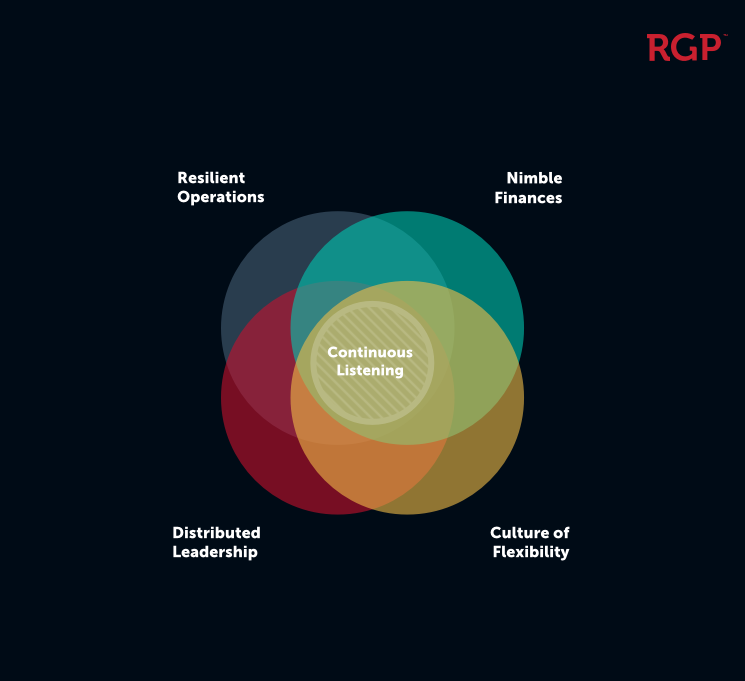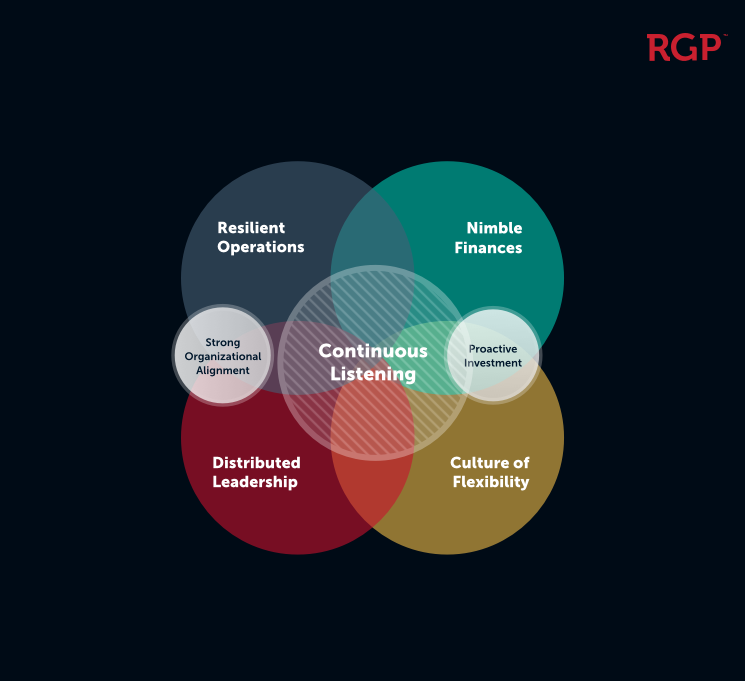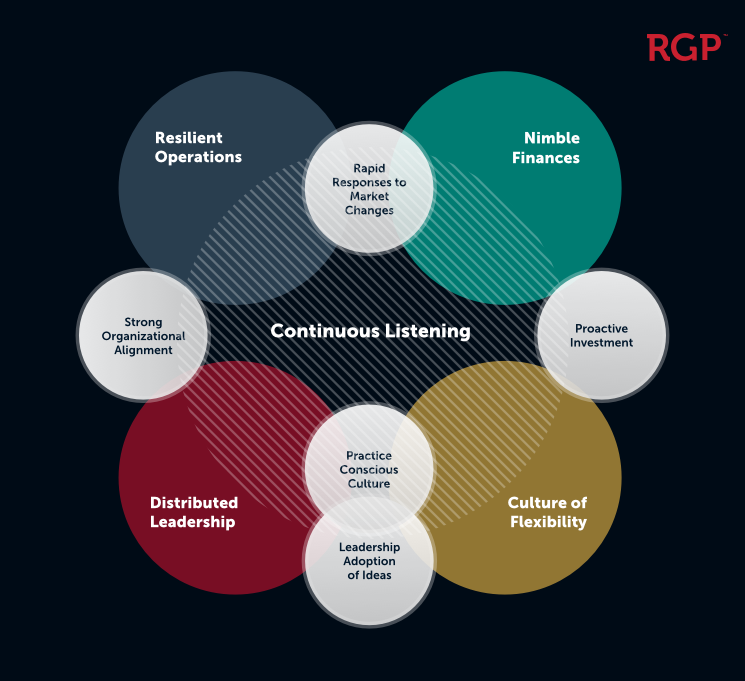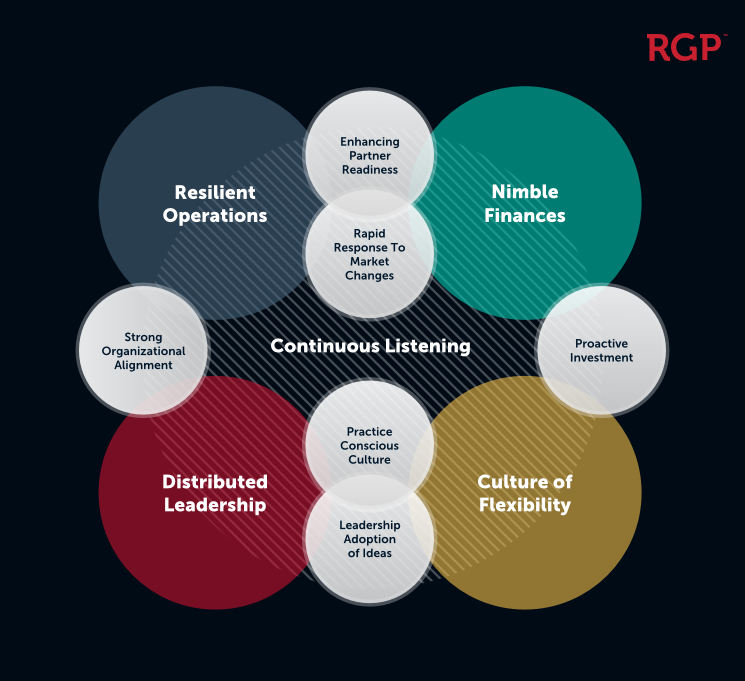Nurture a Shared Sense of Purpose
A strong shared sense of purpose can supercharge your organization’s ability to accomplish big things, while a weak one holds you back. When built on a framework of Continuous Listening, this shared sense of purpose helps align your organization’s vision with your industry, customer base, leadership and workforce.
Get leadership aligned around a shared vision for the future with support from our Change Management team.
Make Strategic Investments by Constantly Prototyping
When information from listening channels aligns with a shared sense of purpose, it reveals opportunities to try new things. Those practicing agility at scale will prototype constantly, creating a feedback loop within their Continuous Listening framework to make smart, proactive investments and speed response to market changes.
See how you can adopt a more agile approach that helps you get to market faster.
Invest in Workplace and Customer Experiences
With the wild shifts in workplace culture that occur with adverse change events, workplace experience becomes vital. Strategic investments in that experience can reinforce a culture of flexibility, increasing innovation, improving employee engagement, reducing turnover, and ensuring that your organization successfully navigates macro events.
Take the first step in enabling a better way to work by exploring human-centered solutions from Veracity, an RGP company.
































